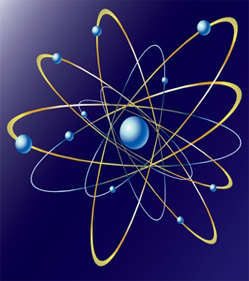In this section, we uncover some of the most fundamental physical and chemical principles underpinning the operation of modern devices. An understanding of such principles is essential to success at the ASVAB Mechanical Comprehension exam.
Posted in 2nd December, 2014 | Mechanical ComprehensionBasic Principles of Mechanics

Basic Principles of Mechanics


We start by asking one simple question – what is energy? Energy, to put it simply, is the ability to do work. This work can take the shape of many forms, but all rely on an exchange between A and B. For instance, if I were to pick up a ball and throw it, I would be expending energy. This expense of energy is known as work. Similarly, a lever can perform work if the correct amount of energy is applied, in the form I deliver by pulling the lever down. Everything that is defined as work is, therefore, also defined as energy. The two concepts go hand in hand. However, there are many different types of energy you should be familiar with:
Let’s look at a few examples to help solidify these different conceptions of energy in your mind:
| # | Type of Energy | Definition |
|---|---|---|
| 01 | Electric Energy | Energy developed from moving electrons in a specific current. |
| 02 | Kinetic Energy | The energy involved in movement. |
| 03 | Potential Energy | Stored energy released under certain circumstances. |
| 04 | Nuclear Energy | Energy produced from internal nuclear reactions inside the atom. |
| 05 | Solar Energy | Energy produced by the Sun as heat and light. |
| 06 | Chemical Energy | Energy stored due to the presence of chemicals. Released by chemical reactions |
- The pendulum of a clock utilizes two different forms of energy. As the pendulum reaches the point farthest left and farthest right, it cannot move any further. At this point the pendulum is said to possess potential energy. However, when the pendulum is released and swings around, it converts the static potential energy into kinetic energy.
- Chemicals contain energy by virtue of the chemical bonds that hold the structure of the molecule together. These chemical bonds contain energy and when you break the bond, you release energy. So, when you burn something, you are breaking these bonds and so, in effect, are producing chemical energy.
- Energy is released in different forms. When the sun undergoes nuclear reactions, it will release this energy in the form of heat and light. Heat and light, therefore, are examples of energy in different forms. Energy is also produced specifically from such nuclear reactions and this energy is referred to as nuclear energy. Nuclear reactions are ones specifically involving the nucleus of an atom.
On your ASVAB Mechanical Comprehension test, you may be presented with a picture of a certain reaction going on. This image will typify a certain type of energy and you will be asked to identify the correct form of energy. It’s important, therefore, that not only do you understand the individual types of energy but also how to identify these types when shown a diagrammatic. We will analyze more examples of this kind as this guide continues, but you should actively think about these six different forms of energy and where you’d expect to see them in everyday life. A regular battery, for instance, converts stored electrical energy as a form of chemical energy. Can you think of any other domestic examples?
Understanding Basic Mechanics
The next concept we need to firmly grasp is that of force. This is probably much simpler to tackle as we’re all familiar with the colloquial concept of force every day. Forces are, to put it simply, those pulling and pushing forces that exist between objects. There are two signifiers of what it means to have a force: magnitude and direction. When we try to measure the amount of force something has, what we’re essentially doing is measuring its magnitude. The second factor, direction, reflects the fact a force tends to act in a particular direction. So – magnitude measures the strength of the force while direction reflects the path this magnitude takes. One of the most familiar forces, the gravitational force, exemplifies these processes.

Gravity is the force that massive objects exert on smaller objects. Take the Earth as a simple example. The vast size of the Earth means it can exert a significant gravitational effect whereas smaller objects, such as the Moon, have considerably less gravitational power. The larger the mass of the object, the greater is its gravitational strength. This gravity is sufficiently strong to keep humans upright on Earth, while also directing falling objects toward the centre of the planet. This force has both magnitude and direction. We can calculate its magnitude based on the mass of the Earth, while we know the direction this force takes us in.
The rate at which objects fall toward Earth is a measure of the acceleration of that object – and you will need to understand the difference between speed, velocity, and acceleration in this regard. The speed of an object is defined as the distance it covers in a given time. For example, an object may move at a speed of 30 miles per hour. The velocity of an object, on the other hand, is the speed at which an object moves in a particular direction. Velocity is, therefore, direction oriented. If you were to move 1 meter forward and 1 meter back, your net velocity would be zero as you did not move. A car moving 5mph north and travels back to move at 5mph west hasn’t changed its speed, but has changed its velocity. Velocity is, essentially, speed + direction.
| # | Type | Definition |
|---|---|---|
| 01 | Speed | Distance travelled over time, typically measured in m/s. |
| 02 | Velocity | Distance travelled in a defined direction. |
| 03 | Acceleration | The rate of change of velocity over time. |
Acceleration is, on the other hand, the rate of change of velocity. If the velocity in a given direction changes over time, this is reflected in the value given by acceleration. Try not to confuse the physical term acceleration with the everyday use involving cars, trucks, or trains. Why are these distinctions important? Well, these terms will appear over and over again as you study for the ASVAB Mechanical Comprehension exam, so familiarizing yourself with each definition will make your study easier and more relevant. For instance, we referred to the gravitational force below. All objects fall to Earth with a fixed acceleration. However, this is assuming there is no air resistance. The effect of our atmosphere means it slows the rate at which objects fall toward the Earth.
This effect from air resistance is also an example of friction. We encounter friction each and every day as we walk along the streets. If there were no friction, it would render it impossible to walk, as we would slide in all directions. All physical hugging between two surfaces in this way is referred to as friction. This effect of friction plays an important role when it comes to machinery, particularly as many surfaces need to be lubricated in order to reduce the corrosive effects of friction. Friction, if harsh and fast enough, can generate significant heat which can have the effect of not only damaging machinery, but also making for a markedly more dangerous environment.
Try to learn these basic principles before understanding the complexity of devices. It’s only by thoroughly grasping the basics will you have any chance at everything else.
Two additional forces you should bear in mind include compression and tension. Compression is the force experiences when two or more materials are pushed together. In contrast, tension is the force that pulls materials apart. In this sense, compression and tension are complementary to one another – one driving materials together while the other force separates them apart. As materials become more and more compressed, they also experience higher rates of friction. When a material has a high ability to withstand tension, the material is referred to as a tensile material. Such materials are often placed as the foundation of bridges as they are capable of withstanding the heavy loads (compression) provided by the bridge.
This completes our basic principles of mechanics. In this section, we focussed in on two fundamental pillars of mechanics: energy and forces. We saw how work is defined as the expenditure of energy, while there are various forms of energy which act in subtle yet distinct ways: chemical energy, electrical energy, potential energy, kinetic energy, nuclear energy, and solar energy. In the second part of this introduction, we defined what a force is, and looked at various types: gravitational, compression, tension, friction – as well as explaining the notable differences between speed, velocity and acceleration. This foundation is necessary not only for the ASVAB Mechanical Comprehension exam, but also for the remainder of the mechanics discussed in this study guide.
In the next section, we build on these basic principles by studying the principles behind mechanical devices.




